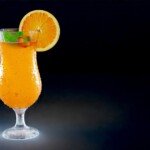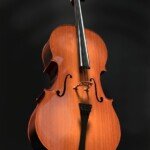Acrylonitrile Styrene Acrylate(ASA) is a 3D printable thermoplastic with various properties that make it ideal for engineering and outdoor uses. ASA is basically a new and improved cousin of acrylonitrile butadiene styrene (ABS), which is more widely known and used (like LEGO bricks). ASA has many of the advantages of ABS but without some of its disadvantages.
ASA, like ABS, is a bit difficult to 3D print because it is sensitive to heat during printing. However, once printed, ASA parts are extremely heat resistant and durable. ASA prints are also strong and durable, even stronger than identical ABS parts. With ABS printing noticed by many usersdifferent,ASA does not yellow when placed outdoors.
In this article, Mohou.com will learn it with youdifferentSome advantages, disadvantages and uses of ASA materials. We’ll also provide some printing recommendations for working with ASA and explain the factors we considered when narrowing down our options.
A,aboutASA

steam straighteningASA track (bottom) compared to unsmoothed track (Source: COden6484 via Reddit)
If you are interested in usingIf you’re interested in printing with ASA, it’s helpful to know what it’s used for and some of the reasons you might want to try (or not) this particular filament. It’s a great choice for outdoor projects or working prototypes (are you going camping soon?). If you currently print with ABS, you should consider trying ASA as they print the same, but ASA has additional benefits. Let’s take a look at its pros and cons!
advantage
Strong resistance to UV, chemicals and water
Acetone Post-Processing Capacity
High impact resistance
Robust and durable
Beautiful finish
Antistatic
default
Releases potentially dangerous vapors
with others3D printing consumables are more expensive than
Requires high extruder and bed temperatures
Printing consumes a lot of energy
Parts may crack, warp and shrink
to use
althoughASA is expensive to purchase and difficult to print, but its qualities make it an ideal filament for difficult use cases. Considering the pros and cons of ASA, you may be wondering what type of model this thermoplastic is best suited for. In the bullet points below, we cover some of the popular project categories that can be 3D printed in ASA.
Automotive Exterior Parts
Housing Components
Sporting goods
exterior signage
garden equipment
Exterior components and lighting fixtures
We now know more about where we can useASA parts, let’s take a look at its printing before knowing the best brands to use!
two,Printing Tips
Adding edges helps avoidASA print distortion (Source: m3tolli via Reddit)
ASA can be a sensitive printing material, so print settings play a key role in the outcome of your model. You should always default to the settings provided by the manufacturer of the specific ASA filament you are using.
The following tips can help reduce usageFrequently asked questions when printing with ASA:
Make sure you have a suitable bed surface.
Use bed glue, e.g.ABS glue, Kapton tape, glue or lacquer.
Use a shell.
Adjust the temperature to avoid overheating.
Set the cooling fan to low speed (after the first layer5-10%).
Make sure the bed is level.
Test temperature (extruder temperature is first250°C, print bed temperature 110°C).
Replace the nozzle when changing materials.
Daguang focuses on providing solutions such as precision CNC machining services (3-axis, 4-axis, 5-axis machining), CNC milling, 3D printing and rapid prototyping services.



















